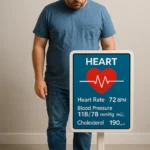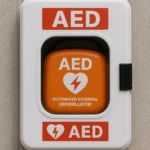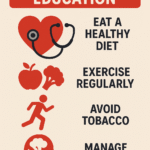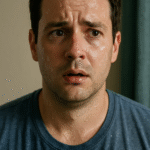
Transforming Chronic Care with AI and IoT Monitoring
Introduction to Remote Patient Monitoring Systems
The Emerging Trend in Healthcare
Artificial Intelligence and the Internet of Things (AIot), based on RTMS, allow chronically ill patients to be watched live and in real time.
Other Trends That Are Developing In Healthcare
In today’s healthcare environment, this issue is critical because:
- Accessibility: Patients view their care from home.
- Efficiency: Providers enjoy saving time and resources in their practices.
- Real-time Data: Continuous monitoring systems generate valuable data in time to avert the most extended hours in the emergency room.
- For Patients: Your compliance, safety, and convenience will not suffer but significantly improve through easy, continuous care.
- For Researchers: Findings will focus on features of the ongoing studies of chronic diseases.
- For Healthcare Providers: Care will be delivered faster, and patient satisfaction will increase.
Historical Context of Remote Patient Monitoring
The Evolution of Remote Patient Monitoring
Remote Patient Monitoring can use artificial intelligence and the Internet of Things (IoT) to eliminate chronic disease patterns. Cancer and serious diseases can also be diagnosed overnight, spoiling hospitals’ business.
- Early Days: In the beginning, it was mainly concerned with the tracking of key health indicators, but with the integration of numerous technologies, the focus now is on enhancing the delivery of healthcare.
- Current Trends: Thanks to AI, it is possible to analyze patient data in real-time, thus promoting the desired active care and lessening the number of hospital stays of less critical patients.
Impact on Healthcare Dynamics
RPM’s effect does not stop at the technological boundary; it is making a drastic change in the medical and public health sectors:
- Personalized Care: Uses the latest technology to analyze vast data and suggest customized treatments.
- Accessibility: Better healthcare access for chronically ill patients due to technology in place.
- Initial Thoughts: Remote Patient Monitoring is a new way of relating to health and well-being, using breakthrough tech to ensure timely, proactive care.
Current Trends in Remote Patient Monitoring
The Transformation
Remote patient monitoring (RPM) has emerged quickly anddone exciting, novel, surprising things. It is now a landmark covenant in healthcare. The main trigger is AI and IoT technologies, which congregate changes in real-time data collection.
Key Insights
- Increased Patient Engagement: Patients can check their health status immediately.
- Data-Driven Decisions: Healthcare providers get immediate information to take proper action.
- Chronic Illness Management: Some patients feel much better after using the RPM devices.
- “The medical area of the future will revolve around personalization.” We will have more intelligent solutions to serve each patient’s needs in the future.
Visual Data
Imagine a dashboard with graphics showing:
- Growth Rates in RPM technology application in various protocols.
- Patient Satisfaction before and after RPM implementation.
- Stay Informed! The fusion of medicine and technology is in the beginning stage now.
The Impact of Remote Patient Monitoring
Enhancing Health and Well-being
The era of remote patient monitoring has brought about a positive revolution in medical care. The combination of AI and IoT has facilitated real-time care for chronic patients, who are now contacted and attended to promptly.
- Immediate feedback: Patients have admitted feeling more at ease since they learned that their vital signs are constantly being checked.
- Empowered families can take a more active role in the healthcare process and thus build stronger family support networks.
Lifesaving Innovations
Significant quality of life benefits arise from it; for example, the patients have to make fewer visits to the hospital for treatment.
- Reduced hospital visits: Many people have noted that they experience fewer crises; as a result, they are less anxious than before.
- Proactive interventions: Instantaneous information prompts a fast response, which may prolong patients’ lives.
- However, these enhancements are not just mechanical updates—they are turning billions of lives into a better side of health. They are also reshaping the lives of the public to a great extent.
Impact of Remote Patient Monitoring on Healthcare Professionals
Challenges in Implementation
Medical technology discussions concerning Remote Patient Monitoring Systems (RPMS) have embarked on an era of complexity for healthcare professionals.
- Training is crucial: Using the new AI and IoT methods requires much education and skill building.
- Cost Concerns: The initial setup and maintenance can become a budget problem.
- Change Management: Transformation is even more difficult from traditional to digital care.
Opportunities for Improvement
While these obstacles cannot be ignored, RPMS can immensely augment patient care and resource management:
- Real-Time Insights: Physicians can keep a 24-hour watch on patients, leading to swift intervention.
- Resource Optimization: Decision-making becomes finer as organizations manage their staff more effectively via the data available.
- Empowered Patients: Participative people are expected to be inclined to work part-time in health care. Therefore, health outcomes are dramatically improved.
- In this new environment, technology must be exploited, and obstacles must be handled proactively to improve our future.
The Shift to Remote Patient Monitoring Systems
Embracing Innovation in Healthcare
Remote Patient Monitoring Systems (RPMS) allow healthcare to change how illness is treated, especially for chronic patients. They provide fast, specific data that directly affects patient survival.
Key Benefits
- Enhanced Efficiency: The medical staff obtains the patients’ data through AI and the Internet of Things, which means they are not limited to the hospital setting, saving hospital visits only for necessary cases.
- Personalized Care Plans: Doctors properly achieve continuous monitoring by using machines that can be altered in the operating room to suit a particular patient’s current condition.
- Better Patient Engagement: The therapy will be more successful if the patient is satisfied with the program.
- Bottom Line: Including RPMS cannot be considered an equipment upgrade alone; it is opening an era of better health and innovative living practices. Why settle for the outdated when the future is much closer to you?
Challenges and Ethical Concerns in Remote Patient Monitoring Systems
Patient Perspectives
- Privacy Risks: People may not be willing to share their health data if it threatens their privacy.
- Digital Divide: Some people don’t have the necessary digital devices, a key determinant of health disparities.
- Data intoxication: Most of the time, continuous signals about a person’s well-being can give a person anxiety instead of relief.
Researcher and Regulator Considerations
- Data Integrity: The main concern is the integrity and bias of AI algorithms.
- Regulatory Gaps: One of the banes to electronic health record utilization is the lack of rule regularity, which, of course, may lead to misuse of such health data.
- Informed Consent: The first and most important thing is to ensure that the patients are well aware of what they are indicating their agreement to, but it usually is not.
Conclusion
The quickest changes in the healthcare industry require the patient to navigate its difficulties well. Technology will eventually find its true purpose in dealing with and solving these issues—i.e., helping, not hampering patient care.
Engage with Remote Patient Monitoring Systems
Embrace the Future of Healthcare
You should consult your doctor for advice on how to use new healthcare technologies.
- Browse apps for staying on top of your health here in the Tech lifestyle, including steps to prevent Heart Disease.
- Set reminder apps for taking necessary medications and checking your vital signs, which you can do on your own time.
- Suppose you cannot see doctors personally. In that case, you can make appointments online but still need to know how to access the web platform.
- Implementing these resources into your everyday life will give you more control over your health than ever.
Future of Remote Patient Monitoring Systems
Innovations on the Horizon
The health domain is amid the most incredible changes it has ever been through, which involve ramping into Remote Patient Monitoring Systems and their use. Through AI and IoT, the future that we are entering has the descriptions as follows:
- Real-time data analysis will provide key health management information ahead of time.
- Wearable technology will advance the user’s health and allow the user to control their life.
- Telehealth growth will result in patients choosing healthcare professionals they feel can better understand them.
Career Opportunities and Breakthroughs
Evidently, without more or fewer obstacles, the entrepreneurs’ intention to improve healthcare with the new application materials and cloud technology can be realized, and a higher employment rate for healthcare jobs is expected shortly. Available jobs compiled include:
- Health Data Analysts: Filtering through the ocean of data to identify relevant decision-making chunks.
- IoT Solutions Developers: Engineering the aid devices for patients to increase their devotion.
- AI Specialists: Developing algorithms that can more effectively predict health events.
- The upcoming period will likely involve technological innovations and building a more connected, responsive healthcare experience. Open your heart to the journey towards health empowerment!
Key Takeaways in Remote Patient Monitoring
Importance of Staying Informed
Healthcare is the sphere that has not been monitored and effectively developed. Remote patient monitoring systems, driven by artificial intelligence and the Internet of Things, are actively reshaping how chronic illness care is handled.
- Instant data access will help you and your doctor stay informed. It will also improve communication.
- Empower patients are more involved in their health than ever.
Why Embrace the Up-to-Date?
Being informed is not only a good idea but also a must! Ferreting out the nuts and bolts of these advancements can facilitate your healthcare progress.
- Real-time health updates can be of better success.
- Proactive treatments tend to be avertable.
- Now act! Examine how remote health monitoring can benefit your health, or consult your physician about incorporating these medical devices into your treatment.












Post Comment